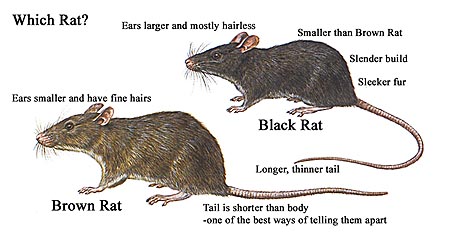Rodents-Comprehensive Group Information-Not Just Rats & Mice
 Rodents And Others
http://www.the-piedpiper.co.uk/th1.htm
Rodents And Others
http://www.the-piedpiper.co.uk/th1.htm
As you can see below there is a full definition of the term Rodentia, if you are interested, like me, then once you have read the preamble you can click on one of the links above to take you to the page which most concerns you. Also included above are some none-rodent types, which , thanks to do-gooders releasing them, various imports and escapes, have become a major problem to indigenous species e.g. Mink...!
 Rodentia: (rats, mice, beavers, squirrels, guinea pigs, capybaras,coypu)
Rodentia: (rats, mice, beavers, squirrels, guinea pigs, capybaras,coypu)
The rodents, or Rodentia, are the most abundant order of mammals. At present, over a quarter of the families, 35 percent of the genera, and 50 percent of the species of living mammals are rodents. Probably an even higher percentage of individuals are rodents, for they tend to be small animals with dense populations. They are one of the few groups of animals that flourish in close association with men. Some, such as squirrels, live independently but fairly successfully near humans. Others, such as the house mouse (Mus musculus) and black and Norway rats (Rattus rattus and R. norvegicus), have adapted themselves to human civilization, and live everywhere that man does. These two rats (and the Polynesian rat, Rattus exulans, of Australia and Oceania) have travelled in ships and boats of all sizes, and have populated the entire habitable world, especially near human habitations (see below for differences). ---CONTINUED at LINK, above ---
Includes:-With photos for identification
- Brown Rat
- k Rat
- House Mouse
- Grey Squirrel
- Red Squirrel
- Coypu
- Woodmouse
- Yellow Necked Mouse
- Harvest Mouse
- Mink
- Capybara
- Common Dormouse
- Glis glis
- Water Vole
- Pine Martin
- Weasel
- Stoat
- Pole Cat
- Bank Vole
- Common/Short Tailed Vole

CROSS-POSTED in
Rodents, Rats, Mice, Bugs and other annoying critters --> Mice



 Rodentia: (rats, mice, beavers, squirrels, guinea pigs, capybaras,coypu)
Rodentia: (rats, mice, beavers, squirrels, guinea pigs, capybaras,coypu)